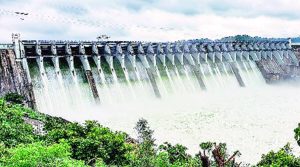Mullaperiyar Dam:

The Supreme Court has directed the Supervisory Committee to take an immediate and firm decision on the maximum water level that can be maintained at Mullaperiyar dam, amid torrential rain in Kerala.
- The SC constituted a permanent Supervisory Committee in 2014 to oversee all the issues concerning Mullaperiyar dam. The dam is a source of friction between Tamil Nadu and Kerala.
- Kerala said the water level should not go above 139 feet, the same as what the court had ordered on August 24, 2018, when the State was hit by floods. It is because the lives of 50 lakh people would be in danger if the water level in the dam is raised.
- However, Tamil Nadu objected to this decision citing the Supreme Court judgments of 2006 and 2014, which fixed the maximum water level at 142 feet.
- The court asked officials of Kerala and Tamil Nadu to interact responsibly and avert any danger to lives. The Court also made it clear that this was not an issue to play politics about.
- Now, the supervisory committee will have to decide about the maximum water level and inform the court about it.
- Mullaperiyar Dam is located in Kerala, it is operated by Tamil Nadu following an 1886 lease indenture for 999 years (the Periyar Lake Lease Agreement) that was signed between the Maharaja of Travancore and the Secretary of State for India for the Periyar Irrigation works.
- Constructed between 1887 and 1895, the dam redirected the river to flow towards the Bay of Bengal, instead of the Arabian Sea and provide water to the arid rain region of Madurai in Madras Presidency.
- The dam is located on the confluence of the Mullayar and Periyar rivers inKerala’s Idukki district.
- Tamil Nadu claims that although it has undertaken measures to strengthen the dam, the Kerala government has blocked any attempt to raise the reservoir water level – resulting in losses for Madurai farmers.




